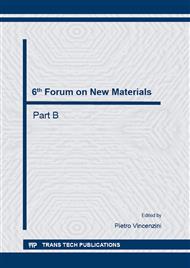p.12
p.17
p.23
p.32
p.38
p.43
p.55
p.69
p.75
Characterization of SiC Ceramic Tube Prepared by the Combined CVI and CVD Process
Abstract:
SiCf/SiC composites are one of the candidates for high temperature structural applications because of their high strength and corrosion resistance under severe conditions and stability under neutron irradiation [1~3]. A silicon carbide fuel cladding for the light water cooled reactors (LWRs) may allow a number of advances, including: the increased safety margins under transients and accident scenarios, such as loss of coolant accident; the improved resource utilization via a higher burn-up beyond the present limit of 62 GWd/MTU; and improved waste management [3~5]. Some components of SiCf/SiC composite will be applied as tubular geometry for the high-temperature core parts. The proposed design of an advanced LWR fuel cladding, referred to as Triplex, consists of three layers: an inner SiC monolith, a central SiCf/SiC composite, and an outer dense SiC evrionmental barrier coating. The inner SiC layer provides the strength and hermeticity to contain fission products. The SiCf/SiC composite layer fabricated by the CVI process provides a pseudo-ductile failure mode. The outer SiC thin coating layer protects against corrosion [5]. The chemical vapor deposition (CVD) technique is an effective approach for the fabrication of SiCf/SiC composite and coated SiC monolith [6]. To increase the homogeneity of the microstructure and the deposition rate of a SiC tube, the process parameters should be optimized and modified.
Info:
Periodical:
Pages:
38-42
Citation:
Online since:
October 2014
Authors:
Keywords:
Price:
Сopyright:
© 2014 Trans Tech Publications Ltd. All Rights Reserved
Share:
Citation:


